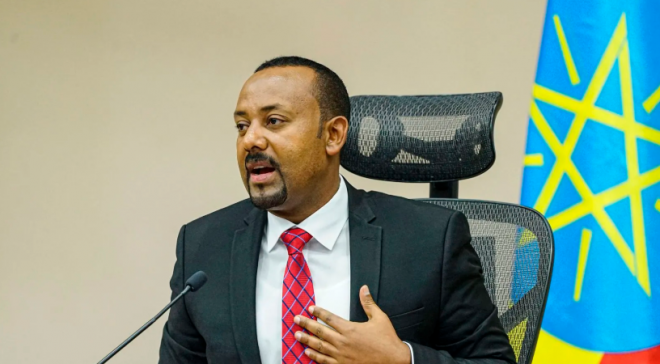Horn of Africa: World Leaders Hold Fate of 20 Million Children in the Balance
NAIROBI, Kenya - The fate of about 20 million children who face a catastrophic hunger and protection crisis in the Horn of Africa due to accelerating extreme weather events rests in the hands of world leaders meeting in New York on Wednesday, Save the Children said.
More than 40 million people across Somalia, Ethiopia, and Kenya are being pushed to the brink by erratic weather patterns that are becoming more frequent and severe due to the climate crisis, as well as prolonged conflicts and economic shocks.
Without large-scale, sustainable investment in early warning systems to better prepare for these major crises, future generations are also at risk.
Save the Children is calling on world leaders and major donors at Wednesday’s pledging event for funds for the Horn of Africa to seize this critical opportunity and increase humanitarian funding to better prepare for future shocks and reduce impacts before it is too late.
The Horn of Africa has experienced five consecutive failed rainy seasons, leading to the longest and most severe drought on record in the past 40 years.
Spring rains have not been strong enough to produce the crops needed to immediately restore the livelihoods of families still reeling from the impact of such a prolonged drought.
In some cases, the rains have brought severe flooding, which has fueled displacement and exacerbated the food crisis. Recent flash flooding in Beledweyne, central Somalia, displaced about 107,000 children in just 48 hours, destroying homes, hospitals, and markets, according to Save the Children staff in the country.
In some parts of Kenya, flooding in March and April caused widespread damage to homes, crops, and livestock, forcing thousands from their homes. In other parts of the country, a sixth failed rainy season is on the horizon.
This fluctuation between droughts and flooding is typical of the ways in which the climate crisis is wreaking havoc across the world, Save the Children said, with some of the poorest countries most vulnerable.
The Horn of Africa is also extremely vulnerable to the El Niño phase of variation in winds and sea surface temperatures, which is likely to hit later this year and bring even more flooding, according to the World Meteorological Organization.
To address the unprecedented level of need in the region, a total of US$7 billion is required for the three countries in 2023. However, each of these plans is less than 25% funded.
Save the Children’s Regional Spokesperson for East and Southern Africa, Kijala Shako, said:
“Climate change is fanning the flames of the hunger crisis in the Horn of Africa and exacerbating existing challenges, further restricting people’s access to food, water, health and nutrition services, and livelihood activities.
“Around 20 million children (about the population of New York State where leaders are convening for the conference) desperately need aid to survive. To make matters worse, the situation is set to deteriorate even further over the coming months. The region’s vulnerability to the El Nino phenomenon projected in the second half of 2023 cannot be underestimated.
“This may be our last chance to bring the hunger crisis under control as weather patterns remain erratic and conflicts persist. The only choice world leaders have is to step up or children will die.”
Beyond millions going hungry, crises in the Horn of Africa are heightening the risk of gender-based violence, sexual exploitation, and abuse of women and children, in addition to hampering children’s access to education.
Families are taking desperate measures to survive by fleeing their homes in search of safety, food, water, and pasture for their livestock. This has left women and children more vulnerable and exposed to protection risks. Children’s education and learning have been curtailed, with approximately three million children out of school across the region, and an additional four million at risk of dropping out entirely.
To avert an unimaginable catastrophe, Save the Children urgently calls upon global leaders for immediate, sustainable humanitarian funding to provide life-saving assistance now, and to invest in early warning systems, disaster preparedness, and resilience programming.
GAROWE ONLINE








